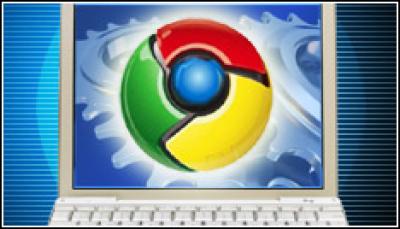Google Releases Chrome OS To Developers

Google has released the Chrome operating system to open source for developers, but said end users would not be able to use it until late 2010.
Google officials released the company’s Chrome operating system to open source for developers to begin testing, but said end users would not be able to use the web operating system until late 2010.
Chrome OS is a web operating system Google is building to run on netbooks as an alternative to computers running traditional operating systems such as Microsoft’s Windows and Apple’s Mac. Those machines take several seconds to boot up, or even minutes if they are older models, because they go through a number of data-checking procedures.
Similar to Windows or Mac, Chrome OS will let users run and manage applications. But unlike Windows or Mac, which invite users to download apps to their desktop, Chrome OS leverages the internet as the platform in a model called cloud computing. Microsoft earlier this week said its own Windows Azure cloud platform would reach users 1 January.
Google’s Chrome web browser runs atop Chrome OS, providing the gateway through users will access web applications. Every application running on Chrome OS will run in the cloud, supported by Google’s servers.
Sundar Pichai, vice president of product management at Google, said during an event at the company’s Mountain View headquarters that while Google was at least a year away from making Chrome OS available to users on netbooks, developers can download the code and began working with Chrome OS free under the open source license.
“As of today, the code will be fully open, which means Google developers will be working on the same tree as external developers,” Pichai said. The idea is to get third-party developers designing applications to run on Chrome OS.
He also said Google’s goals with Chrome OS are speed, simplicity and security. Noting that Google wants Chrome OS to be “blazingly fast,” Pichai said “From the time you press boot, you want it to be like a TV, you turn it on, you should be on the web using your application.”

During a demo, Pichai showed how Chrome booted up on an Asus Eee PC netbook in 7 seconds, with 3 more seconds to log onto an application. Chrome OS had the look and feel of the Chrome web browser, which has 40 million regular users. However, Pichai said the user interface will be different when it finally launches.
Pichai demonstrated Chrome OS’ application tabs for Google Gmail, Calendar and other apps, showing how users can “favorite” an application by pinning it to the browser screen. The Chrome browser already enables this for Web pages; the idea is to help users to get to their favorite apps quickly.
There is also an app menu similar to what users see on Apple iPhone or Android-based smartphones, allowing users to click into apps. When Pichai clicked the app tab for Google Talk a pop-up window appeared on the screen, similar to the way the chat window does within Gmail. Google calls these “persistent windows.”
Pichai also showed a YouTube video from the band U2 running in a separate application tab, as well as how users can read books from the Google Books service on Chrome OS. See screenshots, videos and Chrome OS documentation on Google Watch here.
Pichai said Chrome OS would not support traditional desktop applications, with every app being a web application. Users won’t have to install programs or manage updates because the platform depends on the cloud. “The computer should just work.”
Users who lose their Chrome OS-based netbook will be able to buy a new machine, log in to their Google Account, and have their data, including web apps, cached data and personalisation data such as backgrounds in seconds.
Chrome OS’ security was the big question on many peoples’ minds because of the threats to security to the web.
Pichai said that because Google understands all of the code on Chrome OS, it has a better chance of detecting malicious processes and manage the systems with a reboot.